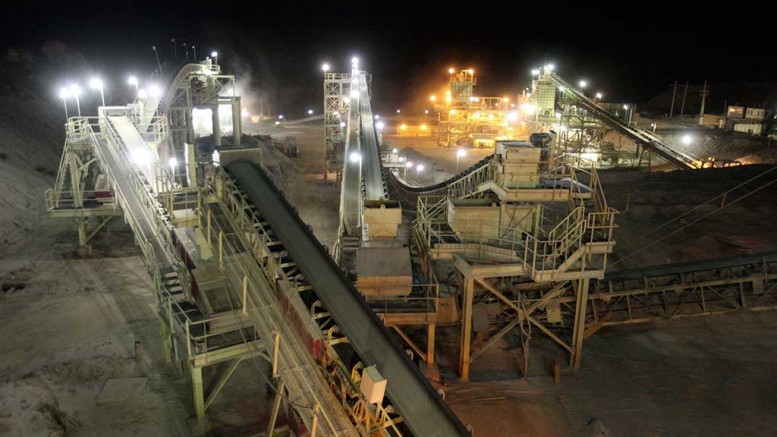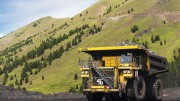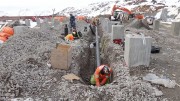With some recovery in commodity prices in 2016, more than a few mining companies are stepping up work programs and striving to hit milestones in the coming year. The following are examples of five such companies.
ALAMOS GOLD
Toronto-based Alamos Gold (TSX: AGI: NYSE: AGI) just seems to go from strength to strength, with the company now boasting three operating mines — the Young-Davidson gold mine in northern Ontario, and the Mulatos and El Chanate gold mines in Sonora, Mexico — plus exploration and development projects in Mexico, Turkey, Canada and the United States.
The company is due to produce 370,000 to 400,000 oz. gold from its three mines in 2016.
Alamos says its near-term focus is to ramp up underground production at Young-Davidson and develop the La Yaqui & Cerro Pelon deposits at Mulatos.
Longer-term the focus is to use cash flow from Young-Davidson and Mulatos to fund future growth of “highest-return” projects.
BARRICK GOLD
After several years of tightened purse strings, shrinkage and consolidation, Barrick Gold (TSX: ABX; NYSE: ABX) is getting back to the business of mining gold, having most recently tabled a tidy profit of US$175 million in its third quarter on revenues of US$2.3 billion.
Debt reduction is still high on the agenda, though. At the end of the third quarter, Barrick had a cash balance of US$2.6 billion and less than US$200 million in debt due before 2019, and $5 billion of its outstanding debt of $8.5 billion not maturing until after 2032. Over the medium-term, Barrick aims to lower its total debt to below US$5 billion.
Operationally, perhaps the biggest question mark for Barrick in 2017 will be what happens when it re-evaluates its mothballed Pascua-Lama megaproject on the Chile-Argentina border. Barrick is now pondering a smaller starter mine at Lama, and recently brought in George Bee to evaluate this development option.
Elsewhere, Barrick says four of its assets provide organic growth opportunities: the Turquoise Ridge expansion in Nevada; Goldrush in Nevada; the Lagunas Norte refractory ore mine-life extension in Peru; and Cortez Hills Deep South in Nevada.
Barrick expects full-year gold production in 2016 of 5.25 to 5.55 million oz. — up from its estimate of 5 to 5.50 million oz. gold — at an all-in sustaining cost of US$740 to US$775 per oz., which is below its earlier 2016 guidance of US$775 to US$825 per ounce.
MCEWEN MINING
McEwen Mining (TSX: MUX; NYSE: MUX) had a strong third quarter, producing 36,500 equivalent oz. gold (24,281 oz. gold and 916,168 oz. silver), and tabling a US$4.2-million profit on revenue of US$18.9 million from its gold-silver mines in Mexico and Argentina.
McEwen’s guidance for all of 2016 is 99,500 oz. gold and 3.3 million oz. silver, or 144,000 equivalent oz. gold.
The company’s most interesting growth prospect for 2017 may be its wholly owned, advanced-stage Gold Bar project in Nevada. McEwen completed a feasibility study at Gold Bar in September 2015, and expects a permitting decision from the U.S. Bureau of Land Management during the third quarter of 2017.
With this final permit McEwen could begin building the mine, which would take one year, and reach production by 2018.
For 2016, McEwen budgeted spending US$3.5 million towards advancing Gold Bar closer to production, of which US$1.9 million had been spent by the end of the third quarter, with mine permitting and engineering activities continuing at press time.
RUPERT RESOURCES
In August, Brian Hinchcliffe-led Rupert Resources (TSXV: RUP) exercised an option to buy the past-producing, fully permitted Pahtavaara gold mine, mill and exploration permits in northern Finland for US$500,000 in cash, a 1.5% production royalty capped at US$2 million and a €560,000 environmental bond.
In September, Rupert raised $7.7 million in the form of a convertible debenture, and in October announced a non-brokered private placement offering of up to 17.7 million shares priced at 65¢ per share for $11 million.
The mine has operated for 15 of the last 20 years, and Rupert intends to spend 2017 building up the resource base to resume mining operations, except this time apparently with “an emphasis on low-cost mining and grade discipline.”
The company is also keen on the 124 sq. km property’s exploration potential.
With 2016 coming to a close, drilling is underway from both underground and surface.
SILVER BEAR RESOURCES
Silver Bear Resources (TSX: SBR) is tackling the daunting task of developing a mine at its 100% owned Mangazeisky exploration licence that includes its Vertikalny silver deposit, located 400 km north of Yakutsk in Russia’s Sakha Republic (also known as Yakutia).
In November Silver Bear reported the mine at Vertikalny was 60% finished, with project expenses to date totalling US$30 million of the proposed US$49.9-million budget, and the project expected to “come in under the feasibility study budget.”
It notes that due to an early winter, the summer overland supply route has been curtailed until the road is fully frozen, which has slightly delayed production ramp-up from early in the first quarter of 2017 to the end of the first quarter.
Silver Bear describes Vertikalny as “one of the highest-grade silver projects in the world.” As of April 2016, resources at the project stood at 1.1 milllion indicated tonnes averaging 831 grams silver per tonne for 29.5 million oz. silver, plus 1.9 million inferred tonnes of 466 grams silver for 27.8 million oz. silver.
At full production, the mine would process 110,000 tonnes of ore per year, with output averaging 2.5 million oz. silver per year, or a total of 18.9 million oz. silver over a 7.3-year mine life.






Good content.